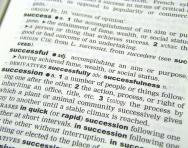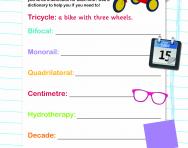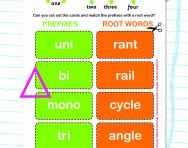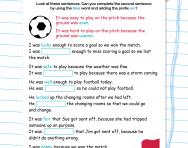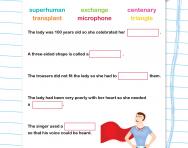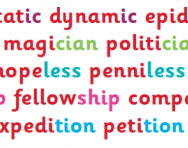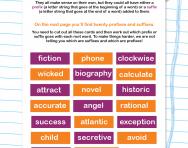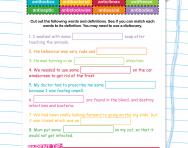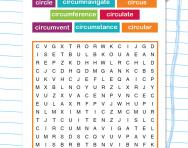What is a prefix?
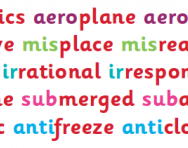
What is a prefix?
Prefixes taught in Key Stages 1 and 2
Children start to learn about words with prefixes in Year 1, although most of them are not taught until Key Stage 2.
They are expected to learn prefixes in the following order. Children will learn what each prefix means, and will look for other words with the same prefixes.:
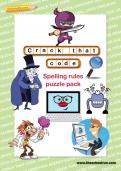
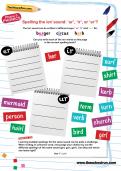
Claim FREE Spelling Resources Today
- Spelling workbooks
- Step-by-step programme
- Spelling test packs
- 100s of worksheets & games
Year 1
Prefixes: un-
Example words: unhappy
Years 3 and 4
Prefixes: dis-, mis-, in-, il-, im-, irr-, re-, sub-, inter-, super-, anti-, auto-
Example words: disappoint, misbehave, inactive, illegal, immature, irregular, reappear, subheading, international, supermarket, anti-clockwise, autobiography
Year 6
Prefixes: bi-, aqua-, aero-, super-, micro-, audi-, trans-, prim-, auto-, tele-, re-, pre-
Example words: bicycle, aquarium, aeroplane, supernatural, microscope, audible, transport, primary, automatic, telephone, replay, prehistoric
Children are taught the meanings of different prefixes (for example: 'bi' means 'two'). Then they will look at words with these prefixes and how that meaning is incorporated into the word, for example: a bicycle has two wheels and a bilingual person is fluent in two languages. This 'breaking down' of words helps children to understand the meaning of other words and to think carefully about how these words are spelt.
Why are children taught prefixes?
Teaching children words with prefixes means that they are broadening their vocabulary by learning new words and their meanings, which they can then incorporate into their writing. It also means that they are learning the spellings of new words.
It is quite common for a teacher to choose one particular prefix and then give a list of spellings with that prefix for the children to learn.
Ways in which teachers help children to learn words with prefixes may include the following:
- The process of Look, Cover, Write, Check, where a child looks at a word, covers it over, writes it from memory and then looks back at the original word to check they have got it right.
- Worksheets where words needs to be matched with a definition.
- 'Fill the gap' worksheets, where a few sentences are given, each missing a certain word with a prefix. A list of these words with prefixes is given in a box on the sheet, and children need to decide which word goes where.
- Asking children to find words with a certain prefix and find out their meanings (using a dictionary).
To find worksheets and activities to help your child practise prefixes look through the selection of spelling worksheets on the site.

Give your child a headstart
- FREE articles & expert information
- FREE resources & activities
- FREE homework help

